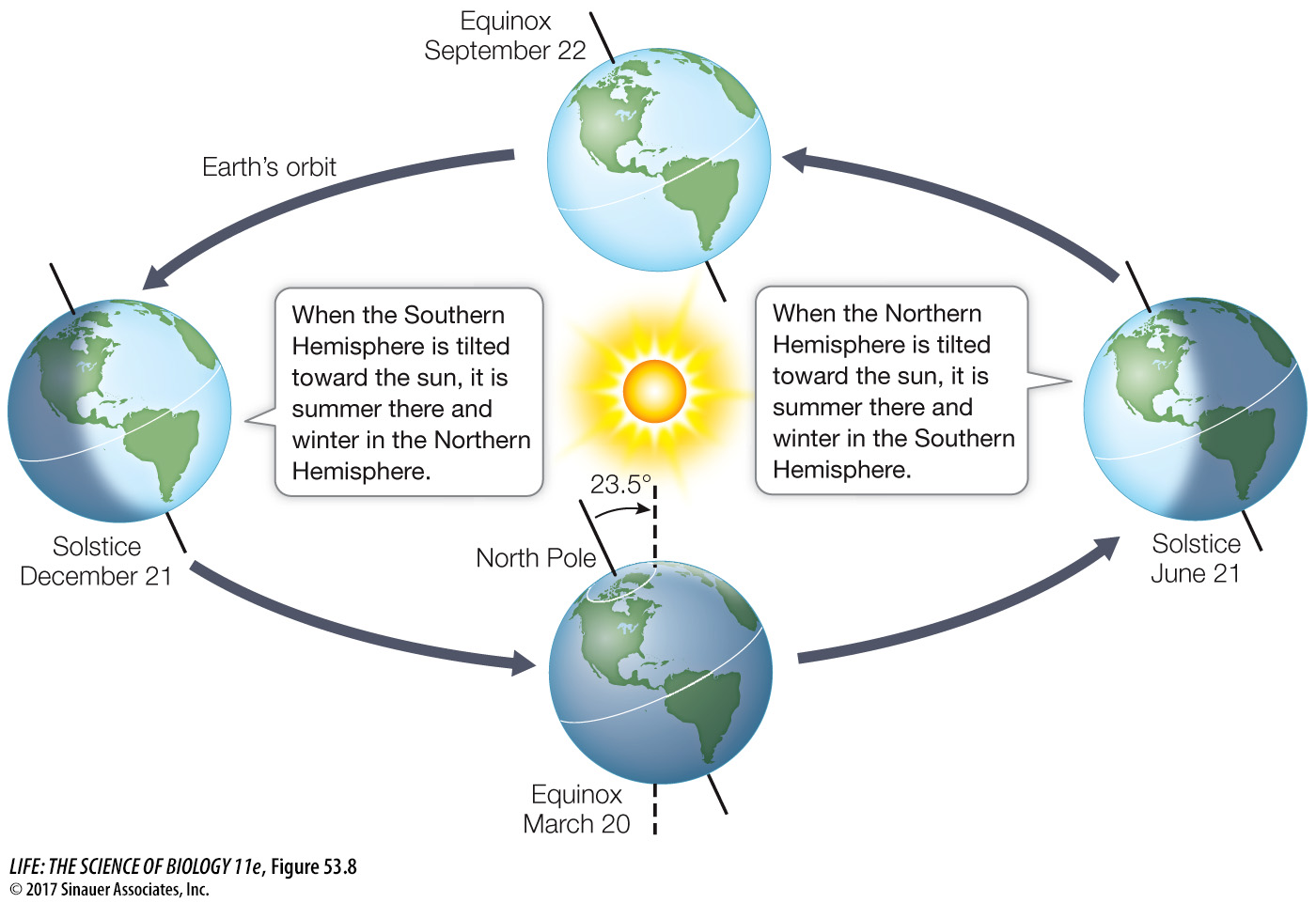The tilt of Earth’s axis and its orbit result in seasons
The tilt of Earth’s axis, coupled with Earth’s orbit around the sun, is responsible for seasonal changes in climate. Earth’s axis is tilted at an angle of 23.5 degrees, changing the amount of sunlight a particular region receives over the course of a year as Earth orbits the sun (Figure 53.8). This tilt causes seasonal variation in temperature and day length. Higher latitudes experience greater seasonal variation than lower latitudes do. Around the equator, day length and seasonal temperatures change only slightly over the course of the year, although there are seasonal shifts in precipitation patterns.
Page 1148

Figure 53.8 Seasonal Change Is the Result of the Tilt of Earth’s Axis and Its Orbit Because Earth’s axis of rotation is tilted, orientation relative to the sun changes over the course of a year as the planet orbits the sun. The resulting variation in solar radiation creates seasonal climate variation.